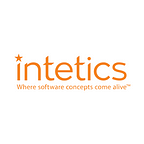Best Practices of Software Architecture
What is software architecture? The term “software architecture” is analogous to the term “building architecture” — but rather than representing the fundamental internal structure of a building, it is related to your application.
Just as the architecture of a building depends on its purpose, (for instance, a residential building and a factory are erected with different internal structures and appearances), the choice of software architecture is also determined by the purpose of your project. Choosing the right architecture of software can reduce initial development time and cost, optimize maintenance expenses, prepare a system for extensions, make it reliable and secure, and will generally help to avoid any potential problems.
On the other hand, the poor architecture of software can cause most of an application’s unexpected problems. In the following article, Intetics experts will introduce you to the basics of best architectural practices and share tips on how to decide which ones suit the needs of your business.
Software architecture includes defining and structuring a solution that meets the technical and operational requirements of the project.
What to Look for While Picking the Right Software Architecture
The influence of software architecture extends throughout the whole lifecycle of the project. Let’s analyze how it changes from stage to stage.
Reduced Development Time
The very first outcomes of your architectural choices can be seen even before the first line of code is written. The project structure will directly influence the difficulty of finding new developers for the job or keeping existing employees. Progressive architectural decisions will make the development team more stable, but you will have a lower number of qualified specialists to choose from. It also will decide how much time and resources your team will need to carry the project to the production stage.
In a short word, your architectural choices must be popular. This principle also guarantees that you will have support from the big development community, a broad choice of plug-n-play libraries, and a rich pool of technical and training information.
However, you must always keep an eye out for architectural solutions that result in successful real-world projects. Some ideas for software architecture are widely discussed but rarely applied, resulting in a lack of proven knowledge and real success stories. The amount of successful applications of given architectural concepts results in well-known metrics that allow you to evaluate your project during its entire lifecycle.
Here is a real-world example: with the start of the COVID crisis, a big online educational platform decided to make huge changes in their application architecture and implement some experimental practices. As a result, when they shared their plans with the development department, it became clear that the team is not ready for such changes. Most people left the company: only some of the newcomers remained. To make a migration, they had to put together a new team.
Scalability and Evolvability of the System
Scalability is the term we use to describe a system’s ability to cope with an increased load. An application’s architecture influences how easy it will be to expand the underlying network infrastructure to handle more requests from users.
A well-known example of scalability pitfalls can be found in the early days of Twitter. At the time, the platform was unable to handle real-time feed updates when a user with millions of followers published a new tweet. And even nowadays, Twitter applies a separate algorithm for handling tweets from celebrities to deliver a smooth experience for all users.
Also, remember about evolvability — the possibility of quickly adding new features or changing existing ones. The right architecture allows you to easily select and add needed components, such as libraries, and to connect external services or entire new blocks to your application. You should always be able to add a new component without re-arranging the whole system.
Read the full blog post here>>
